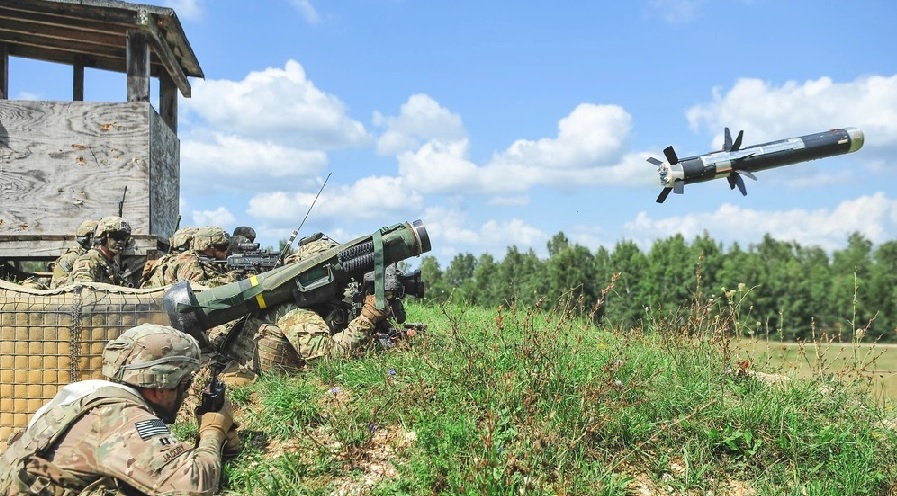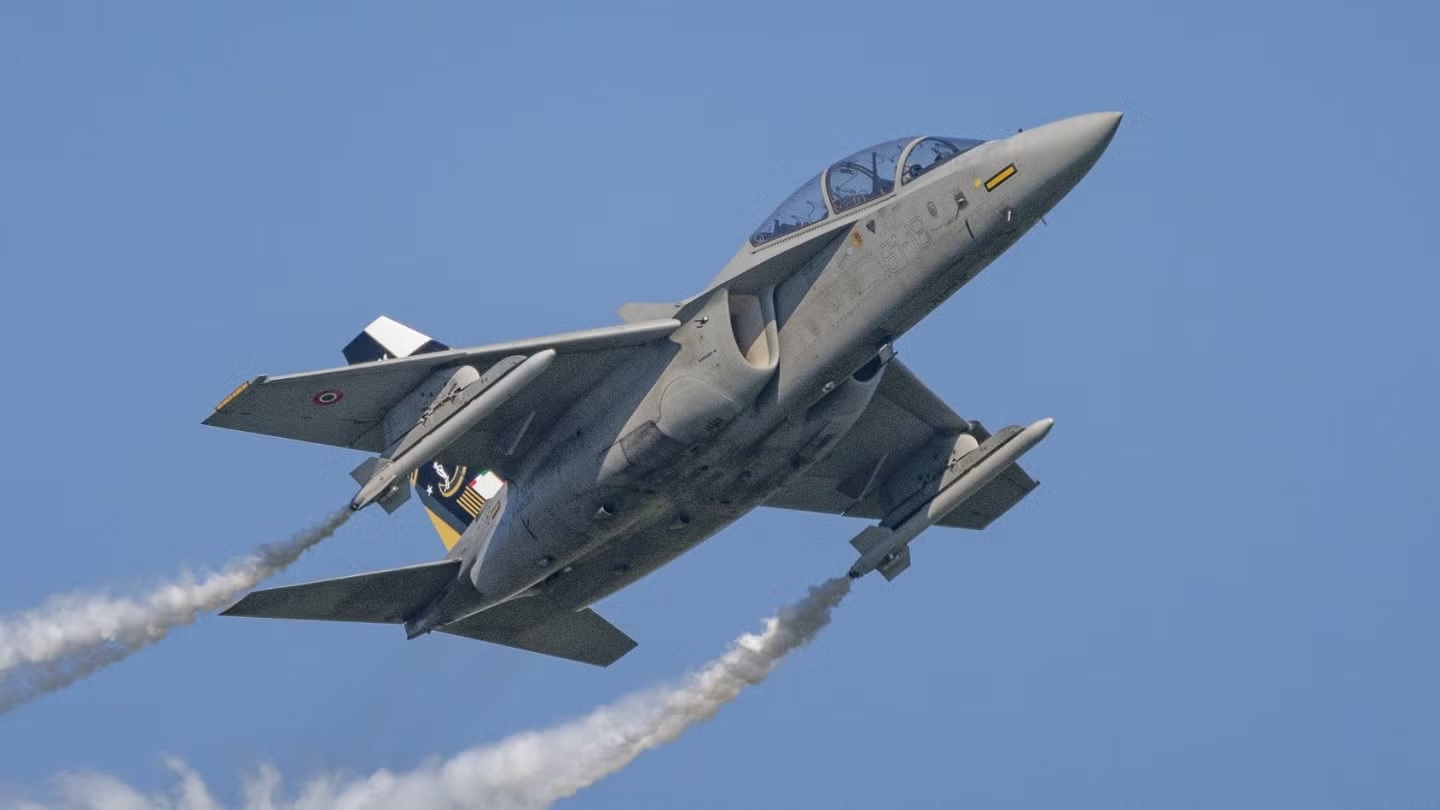World
South Korea has expressed growing concern after China unilaterally declared a “no-sail zone” in a sensitive area of the Yellow Sea where the two countries’ maritime borders overlap. The move has triggered diplomatic exchanges, as Seoul questions the legality and intent behind China’s actions in the contested waters. The area in question lies within what is known as the Provisional Measures Zone (PMZ), a maritime space where the exclusive economic zones (EEZs) of both China and South Korea overlap. Although both countries are technically allowed to carry out military drills in this shared zone, China’s recent decision to restrict access has raised serious questions in Seoul. According to South Korea’s foreign ministry, China’s declaration of a no-sail zone appeared to be made without adequate consultation and could potentially violate the principle of freedom of navigation. The restrictions, which were reportedly in effect until May 27, prompted South Korea to lodge a formal diplomatic protest with Beijing. While China’s Maritime Safety Administration did not provide an official reason for the no-sail order, South Korean maritime authorities suggested it may have been linked to Chinese military exercises. If confirmed, this would not be unprecedented — both nations occasionally conduct drills in the PMZ. However, what sets this incident apart is the scope and lack of transparency surrounding the Chinese move. Adding to the tensions, there have been reports of China constructing three unidentified structures in the same disputed zone. Chinese authorities have labeled them as “aquaculture facilities,” but South Korean experts suspect they could be part of a broader strategy known as “grey zone” tactics — ambiguous actions that stop short of open conflict but serve to assert control and shift the status quo in China’s favor. South Korea has voiced concerns that these developments could be part of a deliberate effort by China to expand its maritime claims under the radar of international scrutiny. The foreign ministry in Seoul emphasized that it is closely coordinating with its defense and maritime agencies to evaluate whether the Chinese actions align with international maritime law. The incident has reignited broader worries in the region over China’s assertive behavior in contested waters, not only in the Yellow Sea but also in the South and East China Seas, where similar disputes have unfolded in recent years. While no direct confrontation has occurred, South Korea’s latest move to challenge China diplomatically signals a readiness to defend its maritime interests more firmly. As the situation continues to evolve, both countries are expected to engage in further dialogue. However, the underlying tension in the Yellow Sea underscores the fragile nature of maritime cooperation in the region — and the growing strategic importance of even the most seemingly routine moves at sea.
Read More → Posted on 2025-05-25 15:14:28World
Japan is making significant strides in the field of directed energy weapons (DEWs), as its prototype laser system continues to show promise in live demonstrations. The country’s military is actively developing advanced laser technologies to address modern aerial threats, particularly small, fast, and disruptive drones that are increasingly being used in conflicts worldwide. The latest updates on this program came during the DSEI Japan 2025 defense exhibition, where a military official involved in the project confirmed that the prototype successfully shot down a small drone in tests conducted earlier this year, in February and March. This marks an important milestone for Japan’s DEW program, as it moves from basic testing to more integrated operations. About the Prototype Laser DEW The prototype is officially known as the ‘Vehicle-Mounted High-Power Laser Demonstration System’. It is specifically designed as a counter-drone weapon system and can emit a continuous 10kW laser beam in a 360-degree radius, allowing it to engage aerial threats from any direction without needing to physically reposition the vehicle. The system has been developed by Japan’s Acquisition, Technology and Logistics Agency (ATLA) in collaboration with Mitsubishi Heavy Industries, a major name in Japanese defense manufacturing. According to details shared at the event, the laser system's cooling unit is currently "over spec," meaning it’s larger than necessary for the current power level. This gives developers room to reduce the system’s size in the future, potentially enabling it to be mounted on smaller, more mobile vehicles. Next Steps in Development Following the successful drone interception trials, the next phase for this DEW project involves integrating the laser system with other Japan Self-Defense Force (JSDF) platforms. This includes pairing it with high-power microwave systems and other counter-drone technologies, creating a layered and multi-platform defense network capable of neutralizing a variety of airborne threats. While no specific timeline has been set for when the laser weapon might officially enter service, military officials noted that the decision would rest with the JSDF leadership. The prototype is currently in an advanced testing phase, and whether it proceeds to active deployment or remains a research tool will depend on the outcome of these integration and operational trials. Future Plans: Missile Defense Lasers Beyond drone defense, Japan is also working on a larger, vehicle-mounted laser weapon intended for missile interception. Although details about the power rating and size of this future system have not been publicly disclosed, officials confirmed its development is underway, with similar operational concepts as the current drone-targeting laser but designed to engage faster and more dangerous aerial threats like ballistic and cruise missiles. Global Context Japan’s DEW efforts reflect a broader global trend, with several nations racing to develop operational laser weapons. The UK’s DragonFire laser DEW recently demonstrated its own capability by successfully destroying an airborne target. Despite this progress, most military laser systems worldwide remain in prototype stages, as developers continue to refine power output, targeting accuracy, cooling systems, and battlefield integration. Conclusion Japan’s laser weapon prototype represents a significant advancement in the nation’s defense technology capabilities. Its successful drone interceptions, plans for system integration, and ambitions for future missile defense applications position Japan as an emerging leader in directed energy weapon systems. As the technology matures, these systems could play a crucial role in protecting military assets and critical infrastructure from the growing threat of drones and precision-guided missiles.
Read More → Posted on 2025-05-25 15:11:39India
The ability to realistically simulate incoming aerial threats is essential for any modern military force. Such systems help in testing air defence weapons, radar systems, and training personnel to respond effectively during high-pressure combat scenarios. In a significant stride towards enhancing this capability, India’s Defence Research and Development Organisation (DRDO) has made remarkable progress with its indigenous STAR Missile project. The STAR, which stands for Supersonic TARget, is a special-purpose missile designed to mimic the flight behaviour of fast and agile enemy missiles. It can simulate threats emerging from the air, sea, or land, making it an invaluable tool for air defence exercises and operational readiness training. Reaching a Critical Development Stage The STAR Missile has now entered its third and most crucial phase of development — full-system integration trials. In this stage, engineers combine all the missile’s key subsystems into a complete prototype. These include: High-speed propulsion systems Advanced guidance and control systems Onboard avionics and telemetry units Sophisticated navigation systems Once integrated, the missile is put through extensive validation trials, where it undergoes real flight tests in combat-like conditions. These tests assess the missile’s accuracy, manoeuvrability, and reliability against simulated threats. Simulating High-Speed Enemy Threats With an impressive maximum speed of Mach 2.5 — over two and a half times the speed of sound — the STAR Missile is capable of mimicking the flight characteristics of modern anti-ship cruise missiles, standoff weapons, and other supersonic threats. It can perform sharp turns, rapid altitude changes, and complex flight patterns — all essential behaviours to challenge and train India’s air defence systems. This feature enables operators to practise intercepting highly dynamic and agile targets, improving their readiness to handle real high-speed threats in wartime scenarios. Key Features of the STAR Missile One of the STAR Missile’s standout features is its entirely indigenous development. Unlike systems such as the BrahMos missile, which involves joint technologies from abroad, STAR has been developed solely by Indian engineers and defence scientists. This move strengthens India’s push towards self-reliance in advanced defence technology and reduces dependency on costly imported equipment. The missile’s modular design further enhances its flexibility. This allows it to be reconfigured quickly for different types of target simulation missions, whether over land, coastal areas, or open seas. As a result, STAR will serve the operational training needs of all three Indian armed forces: the Army, Navy, and Air Force. Technical Specifications Here’s a brief overview of the STAR Missile’s performance parameters: Maximum Speed: Mach 1.8 to 2.5 Altitude Range: 100 meters to 10 kilometers Operational Range: 55 to 175 kilometers Flight Time: 50 to 200 seconds These specifications ensure that the missile can accurately replicate a wide variety of enemy missile profiles, providing realistic training opportunities under diverse operational conditions. Strengthening India’s Defence Readiness The progress of the STAR Missile marks an important milestone in India’s missile technology sector. DRDO has successfully developed several critical components for this system, including composite rocket motors, precision navigation units like ring-laser gyroscopes, and state-of-the-art onboard electronics. Such technological mastery not only boosts India’s defence preparedness but also ensures that its missile development projects remain unaffected by international restrictions or technology control regimes. Once fully inducted, the STAR Missile will provide a cost-effective, supersonic target simulation solution for live interception drills, giving India’s armed forces a significant edge in defending against modern aerial threats.
Read More → Posted on 2025-05-25 15:04:52World
Turkish defence technology firm HAVELSAN has officially begun mass production of its medium-class autonomous unmanned ground vehicle (UGV), BARKAN. This milestone comes after BARKAN entered the Turkish military inventory in 2023 and received the green light for full-scale production from the Presidency of Defense Industries. Since its initial deployment, BARKAN has seen considerable upgrades. Field experience and operational feedback over the past year have been key in shaping these improvements. The vehicle has been fitted with multiple advanced payloads, enabling it to perform effectively in real combat zones, meeting and exceeding performance expectations. To meet the increased demand, HAVELSAN has expanded its development team and brought in new, highly qualified subcontractors. This move is aimed at boosting production speed and maintaining high-quality standards. While the physical development of the platform benefits from the expertise of subcontractors, HAVELSAN’s in-house software engineering team is taking the lead on the vehicle’s brain—its advanced software systems. BARKAN's software is constantly evolving, which is central to its success on the battlefield. One of the unique aspects of BARKAN’s development process is the dual use of simulation technologies and field testing. Virtual simulations allow the team to test and improve BARKAN’s capabilities in a safe, controlled environment before applying them in real-world situations. This combination ensures that BARKAN remains a cutting-edge and dependable system in its class. HAVELSAN General Manager Dr. Mehmet Akif Nacar expressed pride in BARKAN’s progress, crediting the Turkish Land Forces Command and the Defense Industries Presidency for their strong backing. He also acknowledged the teamwork among partner firms, calling it essential to the project’s success. One of BARKAN’s standout features is its ability to function as part of a swarm—a networked group of unmanned ground and air vehicles that operate in coordination. According to HAVELSAN’s Deputy General Manager for Simulation, Autonomous, and Platform Management Technologies, Muhittin Solmaz, this capability was planned from the outset. While BARKAN performs strongly as a standalone unit, its integration potential with other systems sets it apart as a future-ready platform. Veysel Ataoğlu, Director of Product Development and Electronic Systems, emphasized the importance of working closely with Turkish security forces throughout the development phase. He noted that the decision to start mass production is a major vote of confidence in the project, calling it a strong motivator for the entire team. With its intelligent systems, modular payload options, and potential for coordinated swarm missions, BARKAN is poised to become a key element in Turkey’s future military operations.
Read More → Posted on 2025-05-25 14:56:37India
In a landmark achievement for India’s defence manufacturing sector, Pune-based defence technology company NIBE Limited has secured a historic export order worth USD 17.52 million (approximately ₹150.62 crore). The contract, awarded by a leading Israeli defence technology firm, is for the manufacturing and supply of advanced Universal Rocket Launchers capable of striking targets up to 300 kilometres away. This is the first time in India’s history that such a sophisticated, long-range rocket launcher system is being produced domestically for export, marking a major milestone for the Atmanirbhar Bharat (Self-Reliant India) initiative and strengthening India's standing as a rising global defence exporter. About the Contract As per official filings, the contract will be executed over a structured timeline, with deliveries scheduled to continue until November 2027. While the name of the Israeli client remains confidential, it is described as a globally reputed technology leader in the defence sector. This collaboration signifies growing international trust in India’s indigenous defence production capabilities. Universal Rocket Launcher: Features & Specifications The Universal Rocket Launcher systems to be manufactured by NIBE Limited represent cutting-edge military technology, designed for both defensive and offensive operations. These launchers are engineered to deliver: Strike Range: Up to 300 kilometres Multi-Munition Compatibility: Capable of firing various types of guided and unguided rockets, precision munitions, and advanced loitering drones. Platform Versatility: Can be mounted on a range of vehicles and configured for fixed installations. Advanced Targeting Systems: Integrated with digital fire control and real-time target acquisition mechanisms. Rapid Deployment: Highly mobile and capable of rapid setup and strike, enhancing battlefield flexibility. Technologically, these systems are comparable to world-class platforms like Israel’s Precise & Universal Launching System (PULS) developed by Elbit Systems — known for their modularity and precision. Integration with Loitering Munitions One of the standout capabilities of these launchers is their ability to deploy loitering munitions, including systems like SkyStriker drones. These precision-strike drones can travel over 100 kilometres, loiter over target areas, and strike with high accuracy — making them valuable in modern, complex battlefield conditions. Significance for India’s Defence Sector This export order marks a significant leap for India’s defence industry, symbolizing the country’s shift from a heavy importer of defence equipment to an emerging exporter of sophisticated weapon systems. It directly supports Prime Minister Narendra Modi’s Make in India and Atmanirbhar Bharat missions. Notably, India’s defence exports reached an all-time high of ₹23,622 crore in fiscal year 2024-25, reflecting a 12.04% growth over the previous year. The government has set an ambitious target of achieving ₹1,75,000 crore in total defence production by 2025 — and NIBE Limited’s success contributes significantly to this goal. About NIBE Limited Located in the MIDC Industrial Area in Chakan, Pune, NIBE Limited has steadily expanded its defence and aerospace manufacturing capabilities. The company specializes in producing high-performance military systems for both domestic use and export markets. This recent contract establishes NIBE Limited as a credible and competitive player in the global defence industry, opening doors for future international collaborations and advanced technology projects. A Strategic Technological Milestone The indigenous development of these Universal Rocket Launchers showcases India’s growing expertise in critical military technologies, including: High-performance propulsion systems Advanced guidance and control mechanisms Modular launching platform designs Precision targeting and fire control systems Such capabilities not only enhance India’s own defence preparedness but also position the nation as a reliable global supplier of advanced military systems. Looking Ahead The successful execution of this contract is expected to pave the way for additional international opportunities and future technology partnerships for NIBE Limited. As India continues to bolster its defence manufacturing capabilities, companies like NIBE are poised to play a pivotal role in fulfilling both domestic security needs and international defence requirements. This achievement is a testament to India’s emergence as a serious contender in the global defence manufacturing market — a transformation driven by innovation, strategic partnerships, and a strong commitment to self-reliance.
Read More → Posted on 2025-05-25 14:53:18India
In a striking endorsement of India’s military advancements, John Spencer, chair of urban warfare studies at the Modern War Institute, has urged the United States to rethink its defense strategy—taking a cue from India’s sharp focus on lethal, cost-effective technologies. His recent report argues that India has mastered what he calls “the physics of lethality,” creating systems that combine speed, precision, and affordability, all of which could serve as valuable lessons for a U.S. military stuck in expensive, slow-moving development cycles. India’s defense evolution is not just about flashy weapons but about real performance on the battlefield. One standout example is the BrahMos supersonic cruise missile. Jointly developed with Russia and now primarily built in India, the BrahMos can fly at nearly three times the speed of sound. Though each unit costs about $4.85 million—more than double the U.S. Tomahawk missile—the BrahMos delivers a greater kinetic punch and speed, making it significantly harder to intercept and more effective in critical missions. In short, it delivers more bang for the buck. Another success story is the Akashteer system, an AI-driven air defense network that provides real-time surveillance and threat engagement. Despite its advanced features, the entire system comes in at just $240 million—a fraction of what the U.S. pays for similar systems like NASAMS or the Patriot. According to Spencer, this cost-to-capability ratio is what sets India apart. Rather than throwing money at problems, India focuses on smart, scalable solutions that work in real combat situations. Importantly, these are not just theoretical systems. They’ve been used and tested in real conflicts. During recent tensions with Pakistan, India’s precision strikes overwhelmed Pakistani air defenses, many of which rely on outdated Chinese systems like the LY-80 and HQ-9/P. These systems failed to detect or respond effectively, allowing Indian missiles to strike with near-impunity. The outcome was not just a battlefield victory, but a demonstration of technological dominance and strategic execution. What makes India’s approach even more relevant to the U.S. is how it combines innovation with practicality. The BrahMos and Akashteer systems are not lab prototypes—they are fully integrated into India’s defense posture. This is in stark contrast to the American model, where development timelines stretch over decades and often result in equipment that is outdated before it even enters service. Spencer believes the U.S. can benefit immensely from India’s approach, which emphasizes rapid development, affordability, and battlefield utility. As the global security landscape becomes more unpredictable, Spencer warns that the U.S. must adapt. Instead of continuing down a path marked by overspending and under-delivery, the Pentagon could look to India’s playbook to stay ahead. Lethality and efficiency are not opposing goals—they can go hand-in-hand, as India has clearly demonstrated. In essence, India’s rise as a defense innovator is not just a regional story—it’s a global one. And if the U.S. is to maintain its military edge in the 21st century, it may have to learn a few lessons from a partner that’s already redefining what modern warfare looks like.
Read More → Posted on 2025-05-24 04:56:37World
Estonia is set to significantly strengthen its defense capabilities with the planned purchase of hundreds of advanced anti-tank Javelin missiles. The United States has officially approved a deal that will allow Estonia to acquire up to 800 FGM-148F Javelin missiles along with 72 Lightweight Command Launch Units (LWCLUs). The proposed agreement, valued at up to $296 million, marks a substantial step in Estonia’s efforts to modernize its defense systems amid growing regional security concerns. The Javelin missile is a portable, shoulder-fired weapon designed to destroy armored vehicles such as tanks. The latest version, the FGM-148F, comes equipped with a Multi-Purpose Warhead capable of penetrating between 600 to 800 millimeters of rolled homogeneous armor. It has an effective range from just 65 meters to nearly 5 kilometers, making it highly versatile in battlefield conditions. Estonia already has experience operating older versions of the Javelin system. In 2014, the country bought 80 launcher units and 350 FGM-148E missiles, which it began using in 2015. In a show of solidarity and support, Estonia sent 100 of these missiles to Ukraine in March 2022 following the Russian invasion, with more shipments following later. The new deal is not only meant to replace those donated weapons but also to boost the overall strength of Estonia’s defense forces. With these updated FGM-148F variants, Estonia aims to ensure its infantry has the best available tools to counter modern armored threats. Globally, the FGM-148F variant is being adopted by a growing number of countries. Apart from the U.S. Army, nations like Poland, Lithuania, and Australia have also integrated the system. Countries such as Thailand and Norway have placed recent orders, while others like Romania, Kosovo, Morocco, Bulgaria, Tunisia, and Ireland have had recent sales approved. Further interest has been expressed by Albania, Brazil, Latvia, and Estonia itself. In total, the Javelin system is currently in use in 24 countries. Ukraine, in particular, has been a major recipient through military aid. Meanwhile, U.S. defense manufacturer Lockheed Martin has confirmed ongoing discussions with India about the potential local production of the system. This new arms purchase is a strategic move by Estonia to ensure readiness and self-reliance. According to the U.S. Defense Security Cooperation Agency, the approved sale will “improve Estonia’s capability to meet current and future threats by maintaining a strong and ready self-defense capability.” As the geopolitical landscape continues to shift, Estonia's investment in modern missile systems highlights the importance of staying prepared, especially for smaller NATO countries positioned near Russia.
Read More → Posted on 2025-05-24 04:52:26India
In a major stride toward India's goal of defence self-reliance, Indian defence electronics firm Data Patterns has successfully tested an indigenously developed missile seeker as part of the BrahMos supersonic cruise missile trials conducted by the Defence Research and Development Organisation (DRDO). The achievement was confirmed by Mr. Srinivasagopalan Rangarajan, Chairman and Managing Director of Data Patterns, who called the test a "textbook performance." He noted that the seeker, which was entirely designed and built in India, performed flawlessly during flight trials just a few weeks ago. In missile systems, the seeker plays a critical role—it is the brain of the missile's guidance system, allowing it to detect, track, and lock onto its target. A highly sophisticated component, the seeker ensures the missile can hit precise targets even in complex and contested environments. The fact that Data Patterns' indigenous seeker passed real-world trials with the BrahMos missile marks a technological breakthrough. It showcases the rising capability of India's private defence sector to create high-performance, mission-critical components that were once sourced from abroad. The BrahMos missile, co-developed by India and Russia, is one of the fastest and most versatile missiles in the world, capable of being launched from land, air, and sea platforms. It travels at speeds between Mach 2.8 and 3.0, making it a key part of India’s strategic weaponry. Until recently, one of the most sensitive and vital parts of this missile—the seeker—was imported. Now, the successful testing of a locally developed seeker is expected to reduce India's reliance on foreign defence suppliers, aligning perfectly with the government’s ‘Aatmanirbhar Bharat’ (Self-Reliant India) initiative. Mr. Rangarajan also shared that more orders for these indigenous seekers are expected soon, which signals growing confidence in Indian-built defence technology. This move will not only strengthen India’s national security but also support the development of a robust indigenous defence manufacturing ecosystem. Data Patterns is already well-known for producing high-end electronic systems for radar, avionics, and missile applications. Its success with the BrahMos seeker adds another feather to its cap, confirming its role as a key player in India's defence future. This achievement not only advances India’s strategic autonomy but also reinforces the foundation of a self-sustaining supply chain for vital defence components—an essential step for any nation aspiring to secure its borders through technological independence.
Read More → Posted on 2025-05-24 04:49:19World
In a landmark development for India’s naval modernization efforts, Garden Reach Shipbuilders & Engineers Ltd. (GRSE) has been awarded a major contract by the Indian Ministry of Defence to construct five state-of-the-art Next-Generation Corvettes (NGCs) for the Indian Navy. Valued at approximately $2.9 billion (INR 24,500 crore), this deal represents one of the largest orders ever placed on an Indian shipyard and marks a significant leap in India's journey toward achieving maritime self-reliance under the "Aatmanirbhar Bharat" initiative. Strengthening the Indian Navy’s Surface Fleet The Next-Generation Corvettes are being acquired under Project 17B, part of the Indian Navy’s broader strategy to enhance its surface combatant strength. Designed to perform a wide spectrum of missions — from coastal surveillance and anti-surface warfare to anti-submarine and limited area air defense roles — these versatile platforms are expected to operate as formidable force multipliers in littoral and open-sea scenarios alike. The NGCs will be equipped with cutting-edge technologies and stealth features including low radar cross-sections, infrared signatures, and acoustic suppression systems. Their design will incorporate modern hull forms optimized for stealth and survivability in contested environments. The ships will also house the latest indigenous weapon systems, including surface-to-surface and surface-to-air missiles, close-in weapon systems (CIWS), advanced sensors, and an integrated combat management system (CMS). GRSE: A Pillar of Indigenous Shipbuilding The Kolkata-based GRSE, a premier public sector shipyard under the Ministry of Defence, has a proven track record in delivering complex naval platforms. It was one of the key contributors to the earlier Kamorta-class (Project 28) ASW corvettes and has successfully constructed over 100 warships to date — the highest by any Indian shipyard. With this contract, GRSE cements its position as a core strategic partner in India's naval indigenization efforts. According to the company, the construction of these five corvettes will also generate substantial employment opportunities, involving over 2,000 direct and 10,000 indirect jobs across ancillary industries, including MSMEs and local vendors. Indigenous Content and Technological Leap The Next-Generation Corvettes are expected to have an indigenous content of over 80%, underscoring India’s commitment to reducing foreign dependence in critical defense technologies. This includes the integration of Indian-made engines, sensors, weapons, and electronic warfare systems. Key expected features include: Length: Approximately 110–120 meters Displacement: Between 2,500 and 3,000 tons Speed: In excess of 25 knots Range: Over 4,000 nautical miles Crew Capacity: Around 120 personnel Armament: BrahMos or similar supersonic missiles, Barak-8 or VL-SRSAM systems, torpedoes, and CIWS Aviation Facility: Flight deck and hangar for one multi-role helicopter These advanced platforms will bring enhanced situational awareness, rapid threat neutralization, and increased operational readiness to the Indian Navy's Eastern and Western fleets. Strategic and Geopolitical Implications The acquisition of these Next-Generation Corvettes comes at a time of heightened security concerns in the Indo-Pacific, particularly with increased Chinese naval activity in the Indian Ocean Region (IOR). These ships are expected to play a crucial role in enhancing India’s presence and influence in strategic chokepoints and Exclusive Economic Zones (EEZs), bolstering maritime domain awareness and freedom of navigation. Moreover, the emphasis on indigenous design and production underlines India’s aspirations to not only cater to its defense needs domestically but also emerge as a global supplier of naval platforms under the "Make in India for the World" initiative. The delivery of the first Next-Generation Corvette is expected within 5–6 years, with the remaining ships being delivered sequentially thereafter. The successful execution of this contract will further pave the way for similar indigenous projects such as the Next-Generation Destroyers (NGDs), Multi-Purpose Vessels, and Unmanned Surface Vehicles (USVs), which are currently on the drawing board. As India continues to invest in modernizing its naval fleet to secure its maritime frontiers and interests, the GRSE contract for five Next-Generation Corvettes stands as a defining milestone — one that combines strategic foresight, indigenous innovation, and industrial capability to shape the future of Indian naval warfare.
Read More → Posted on 2025-05-23 15:55:01World
North Korea's ambitious naval modernization plans have suffered a major blow after the failed launch of its newly built 5,000-ton destroyer at the eastern coastal shipyard in Chongjin. Satellite images shared by a British defense think tank have revealed serious damage to the warship, confirming widespread speculation that the launch did not go as planned. The images, taken on May 22, show the massive warship stranded in a precarious position. Its bow is firmly grounded on land while the stern hangs awkwardly in the water, partially submerged. A large blue tarp covers parts of the hull, likely in an attempt to either conceal the damage or protect it from further deterioration. North Korean state media, through the Rodong Sinmun, openly acknowledged the disaster, labeling it a “serious, intolerable accident.” Leader Kim Jong Un was present during the launch attempt and was reported to have described the event as both a “grave incident” and a “criminal act,” highlighting the scale of the disappointment at the highest level of leadership. The cause of the failure appears to be a malfunction in the launch sled system, according to the Korean Central News Agency (KCNA). The stern of the ship reportedly slid into the water too early, breaching the hull and upsetting the ship’s balance, leaving the bow stuck on the launch platform. Experts reviewing the situation believe that the warship has likely taken on water and suffered internal damage. A naval construction analyst noted that the tilt of the vessel suggests flooding of compartments, which may have ruined vital systems such as propulsion and electronics—making the ship effectively unusable in its current state. Despite the scale of the accident, North Korea has not released any official photos of the incident but has confirmed that Kim Jong Un has ordered urgent repairs. He has reportedly instructed that the warship be restored before a major political meeting in June, underlining its symbolic importance to the regime. However, recovery efforts may not be easy. Analysts suggest that North Korea lacks the heavy-duty maritime equipment needed for such an operation. Lifting the warship would require powerful cranes, barges, and technical expertise that North Korea likely does not possess domestically. The country may need to seek outside help, though sanctions and isolation complicate such options. This failed launch marks a significant setback in Pyongyang’s efforts to showcase a more modern and capable navy. The destroyer, believed to be one of North Korea’s largest surface ships, has drawn attention from military analysts and neighboring countries. Its failure to launch not only delays the country’s naval ambitions but also undermines the image of strength that Kim Jong Un’s regime often tries to project during periods of heightened regional tension.
Read More → Posted on 2025-05-23 15:49:20World
In a bold leap towards redefining modern warfare defense, the United States has unveiled its most ambitious and technologically advanced air defense project to date—the "Golden Dome", a comprehensive, multi-layered defense shield that promises near-total protection against missiles, drones, and even hypersonic threats. With an estimated total program cost surpassing $500 billion, it is now the most expensive weapon system ever conceived, eclipsing even the F-35 Joint Strike Fighter program. What is the Golden Dome? The Golden Dome is not just a missile shield—it is a fusion of next-generation radar systems, artificial intelligence-driven threat analysis, advanced directed-energy weapons, and a constellation of low-orbit defense satellites, all designed to create an impenetrable airspace over the continental United States and key overseas assets. The system draws its name from the Israeli Iron Dome, but in scale and capability, the Golden Dome is exponentially more complex and powerful. It has been described by military analysts as “a space-integrated version of NORAD fused with Star Wars-era missile defenses”. Technical Specifications and Capabilities 1. Multi-Layer Defense Architecture The Golden Dome incorporates a three-tiered defense system: Exoatmospheric Layer: Utilizes kinetic-kill vehicles launched from orbital satellites and space-based interceptors to target ICBMs and hypersonic glide vehicles during midcourse flight. Endoatmospheric Layer: Employs THAAD-Next, Patriot NG, and Lasers mounted on mobile Stryker vehicles to intercept threats in the terminal phase, including maneuverable hypersonic vehicles and cruise missiles. Point Defense Layer: Short-range, ultra-fast electromagnetic railguns, microwave weapons, and directed-energy lasers positioned around high-value infrastructure and military bases to neutralize drones, loitering munitions, and fast incoming projectiles. 2. Satellite Constellation: "Sentinel Net" The Golden Dome is powered by a dedicated constellation of 326 low-Earth orbit (LEO) satellites named Sentinel Net. These satellites serve three primary functions: Early Threat Detection: Using infrared sensors and AI-enhanced imaging to detect launches and hypersonic flight profiles within seconds. Midcourse Tracking: Providing real-time telemetry and course prediction data to interceptors. Kill Confirmation and Damage Assessment: Verifying successful interceptions and tracking debris trajectories. Each Sentinel satellite is equipped with quantum encrypted laser communication systems, ensuring instant data relay across the globe without latency or interception. 3. Ground Infrastructure 42 Ground Control Stations across the U.S. and allied territories, functioning as coordination and launch hubs. 7 Centralized AI Command Nodes, powered by supercomputers that process over 12 petabytes of threat data per second, determining optimal interception strategies. Over 150 mobile ground interceptor units, equipped with vertical-launch missile silos and electromagnetic counter-drone modules. Cost Breakdown: Why So Expensive? The mind-boggling $500 billion price tag is driven by several unprecedented expenditures: Component Estimated Cost (USD) Satellite Constellation $120 Billion Directed Energy Development $90 Billion AI Command Network $75 Billion Mobile Defense Units $60 Billion Launch Infrastructure $45 Billion R&D and Software Integration $60 Billion Ground Stations and Bases $50 Billion Unlike traditional weapons systems, the Golden Dome merges multiple military and civilian technological domains: space, AI, quantum computing, and advanced weaponry, leading to a program that not only defends but also revolutionizes warfare infrastructure itself. Can It Truly Provide 100% Protection? While military spokespeople cautiously avoid using the phrase "100% protection," internal Pentagon whitepapers suggest the Golden Dome is designed to offer "complete engagement capability against all known aerial threats", including: ICBMs and SLBMs Hypersonic glide vehicles (Mach 5+) High-speed cruise missiles Autonomous and swarming drones Ballistic and maneuverable reentry vehicles The system is built around zero-failure AI protocols, meaning redundancy is factored at every level. Each missile launch is typically targeted by two to three interceptors from different layers of the system, including space-based hits, ground-launched interceptors, and energy weapons—resulting in an interception probability greater than 99.7%, the highest ever achieved in live military tests. Global Implications and Strategic Advantage The unveiling of the Golden Dome shifts the strategic balance. While Russia and China have made rapid advances in hypersonic weapons, the U.S. now possesses a multi-layered defense that could neutralize those advantages. However, some critics argue that such a high-cost system could spur a new arms race in space, particularly in anti-satellite weaponry aimed at blinding or disabling Sentinel Net. Conclusion The Golden Dome represents a quantum leap in air defense—an integrated, AI-driven, space-supported warfighting umbrella that can neutralize virtually any aerial threat. But it comes at a price—both financially and geopolitically. As nations react to America’s ultimate shield, the world enters a new era of defense, where space, cyberspace, and traditional military power converge. Whether it guarantees peace or provokes escalation will depend on how wisely it is wielded.
Read More → Posted on 2025-05-23 15:46:04World
Austria is taking a major step to modernise its air force by ordering 12 state-of-the-art M-346 FA (Block 20) light combat aircraft from Italy’s Leonardo company. The deal was announced on 21 May by the Italian Ministry of Defence as part of an intergovernmental agreement between the two countries. This marks a significant move for Austria as it replaces its ageing fleet of Saab-105OE jet trainers, which were retired in 2020. The M-346 FA, a light fighter version of the well-known training aircraft, was chosen for its versatility and cost-effectiveness. Austria has long been interested in this jet, and after signing a Letter of Intent in December 2024, the process to acquire them has now officially begun. The contract includes not just the aircraft but also a package of modern equipment and weapons: IRIS-T short-range missiles, 20mm gun pods, rocket launchers, electronic warfare pods, and a full mission simulator to train pilots. These new jets are not just for training. Austria plans to use them for multiple roles—training future pilots with real weapon systems, conducting close air support missions to help ground forces, carrying out reconnaissance missions using modern sensors, and assisting in forward air control training (especially to reduce training costs at home). They will also act as a support wing to the Austrian Eurofighter Typhoon fleet, particularly for tasks like intercepting slow-flying aircraft, helicopters, or drones—an increasing concern given the rise of drone-related threats. A key feature of the M-346 FA is its ability to stay in the air longer thanks to in-flight refuelling. Each aircraft will be equipped with a refuelling probe compatible with Austria's recently ordered KC-390 tanker-transport planes, ensuring longer missions without returning to base. Austria becomes the first customer of the next-generation Block 20 version of the M-346 FA. This new version is still in development and is expected to offer several upgrades. It will include a modern cockpit with large touchscreens, advanced head-up and helmet-mounted displays, and an improved AESA radar with better target tracking capabilities than the older Grifo-346 radar. The prototype of the Block 20 is expected to be ready by mid-2027, with full production aircraft set to arrive in Austria by late 2028. The agreement also leaves the door open for Austria to purchase up to 12 more jets in the future, possibly in two more batches of six. In simple terms, this move helps Austria fill a critical gap in its air force, giving it a modern, flexible, and affordable aircraft fleet that can handle both training and combat duties—making the country better prepared for future air defence needs.
Read More → Posted on 2025-05-23 15:10:45India
In a significant move, the Indian government has closed the airspace over the Andaman and Nicobar Islands on May 23 and 24, 2025, indicating preparations for a major missile or weapons system test. A formal Notice to Airmen (NOTAM) was issued on May 16, warning aircraft to steer clear of a large corridor in the region during specific hours each morning. The restricted area spans roughly 500 to 510 kilometers across the Andaman Sea, with airspace shut daily from 7 AM to 10 AM Indian Standard Time. This kind of sweeping closure, which affects all civilian flights and blocks nine international air routes, typically suggests military activity of high importance—most likely a missile launch or weapons test. While officials have not confirmed the exact type of missile being tested, experts believe the scale and location of the closure point to a strategic trial. The Andaman and Nicobar Islands are no strangers to such events. They have long served as testing grounds for India’s advanced weapon systems, including the BrahMos supersonic missile and other air-launched ballistic weapons. Similar tests were conducted here earlier this year and in 2024. The test is believed to involve the Tri-Service Theatre Command, which manages India’s integrated defence assets across the Andaman and Nicobar region. This means the test could involve a coordinated effort between the Indian Navy, Air Force, and Army—a clear demonstration of India’s growing joint warfare capabilities. Though the India-Pakistan border is currently calm, this test comes as India continues Operation Sindoor, a counter-terror campaign launched on May 7 against hostile elements beyond its borders. The timing may not be a coincidence, as India seeks to reinforce its readiness and strategic edge. The geographical importance of the Andaman and Nicobar Islands also plays a role. Located close to the critical Malacca Strait—a key route for global trade and naval movement—the islands give India a prime position to monitor and influence activity in the Indo-Pacific region. Conducting missile tests here sends a strong message about India’s ability to defend its interests far from the mainland. Authorities have advised all aviation and maritime traffic to avoid the area during the test hours for safety. Though the specific missile being tested is still under wraps, the signs point to a meaningful step forward in India’s defence capabilities, likely aimed at enhancing its deterrence and regional influence.
Read More → Posted on 2025-05-23 15:05:07World
In a powerful display of naval strength and coordination, the U.S. Navy demonstrated its advanced missile defense capabilities during the NATO-led Exercise At Sea Demonstration/Formidable Shield (ASD/FS) 2025. This major international exercise, held in May across the European theater, included multiple successful missile interceptions by two U.S. Navy destroyers—USS Thomas Hudner (DDG 116) and USS Bulkeley (DDG 84). The highlight of the event came on May 15, when the USS Thomas Hudner successfully intercepted a short-range ballistic missile using an SM-6 missile. This marked a significant achievement under the exercise's Integrated Air and Missile Defense Testing (IAMD-T) scenario, showcasing the ship’s ability to respond quickly and effectively to incoming threats. Just five days later, on May 20, both the Thomas Hudner and the Bulkeley collaborated in a more complex operation. Together, they intercepted a medium-range ballistic missile and a simulated missile target using SM-3 missiles. These actions were coordinated through the advanced Aegis Weapons System, which is specifically developed to detect, track, and destroy enemy ballistic missiles. The success of these live-fire missions reinforced the combat readiness and operational strength of the U.S. Navy’s missile defense systems. According to Navy officials, these intercepts demonstrate that U.S. forces are not only capable of defending against high-tech threats but also capable of working seamlessly with allied nations. A Navy spokesperson emphasized that these exercises send a clear signal of combat credibility to any potential adversaries. Exercise Formidable Shield 2025 is considered the largest live-fire naval exercise in the European region. Hosted by the U.S. 6th Fleet and executed by Naval Striking and Support Forces NATO, the event began on May 3 and involves about 6,900 personnel from multiple NATO countries. The exercise spans across land, sea, and air domains and integrates a wide range of assets—from allied warships and ground-based air defense systems to fighter jets and unmanned platforms. Its purpose is to prepare NATO forces to respond to real-world threats by sharpening their interoperability and coordination under simulated combat conditions. Ultimately, the achievements of the USS Thomas Hudner and USS Bulkeley underscore the importance of joint training and modern weaponry in preserving international security and maintaining deterrence in an increasingly complex global environment.
Read More → Posted on 2025-05-23 15:01:12India
In a firm and clear message, External Affairs Minister S. Jaishankar has refuted claims made by former U.S. President Donald Trump regarding American involvement in mediating a ceasefire between India and Pakistan. Speaking during an interview in the Netherlands, Jaishankar clarified that no third party was involved and that the recent ceasefire was a direct outcome of discussions between New Delhi and Islamabad. “This is something that only India and Pakistan need to settle directly,” Jaishankar stated, reaffirming India’s long-standing position on keeping external actors out of the equation. He stressed that India is open to dialogue, but only if Pakistan is willing to engage seriously and stop sponsoring cross-border terrorism. “We are always ready to talk, but the talks must be serious and should focus on stopping terrorism,” he said. Jaishankar's response came after Trump claimed that the U.S. had helped bring peace in what he described as a “thousand-year conflict.” India, however, has consistently rejected such claims, asserting that the Kashmir issue and related tensions are strictly bilateral matters. In the same interview, Jaishankar provided context to the complex India-Pakistan relationship, which has remained strained since the partition of British India in 1947. He recalled how Pakistan initiated hostility early on by sending fighters disguised as tribal militias into Kashmir. These individuals were later confirmed to be Pakistani soldiers, some in uniform and others in disguise. “Over many years, Pakistan has followed a path of extremism and has used terrorism across the border to put pressure on India,” he noted, pointing to a pattern of provocations that has continued for decades. Tensions escalated sharply after a brutal terrorist attack in Pahalgam on April 22, which killed 26 people, including a Nepali citizen. In response, India launched ‘Operation Sindoor’, a precision military operation targeting nine major terrorist hideouts across Pakistan and Pakistan-occupied Kashmir (PoK). Sources familiar with the operation revealed that over 100 terrorists from groups like Jaish-e-Mohammed, Lashkar-e-Taiba, and Hizbul Mujahideen were eliminated in the strike. The operation was a strong statement of India’s intent to tackle terrorism at its roots and demonstrated its capacity for targeted counter-terror action. With Operation Sindoor, India sent a clear message: the country will defend its people and territory with decisive force, and it does not rely on international intermediaries to manage its core security issues. As Jaishankar reiterated, peace with Pakistan is possible — but only when terrorism stops and dialogue is taken seriously.
Read More → Posted on 2025-05-23 14:58:03World
In a significant shift in its naval strategy, the Netherlands has officially decided not to equip its submarines with American-made Tomahawk cruise missiles. The decision, revealed in the latest annual Defence Project Overview report, comes after the Ministry of Defence found that restarting production of the submarine-launched variant of the Tomahawk would involve excessive financial and time-related burdens. Why the Plan Was Abandoned The Royal Netherlands Navy had originally intended to purchase the UGM-109E Tomahawk — a torpedo tube-launched (TTL) variant of the famous cruise missile — for both its existing Walrus-class submarines and its upcoming Orka-class boats, expected to enter service in the mid-2030s. However, the submarine-launched version of the Tomahawk, specifically the Block IV variant, has not been produced for several years. Raytheon, the missile’s manufacturer, would need to restart its production line, which was found to be both time-consuming and extremely costly. Dutch officials tried to gather interest from other countries to share the cost of restarting production through a bulk purchase, but no international partners committed to the plan. Faced with high financial risks and extended delivery times, the Dutch Ministry of Defence ultimately chose to withdraw from integrating the Tomahawk into its submarines. What Happens to the Surface Fleet? While submarine plans have been dropped, the Netherlands will continue its program to arm its surface warships with the RGM-109E vertical-launch version of the Tomahawk. This includes fitting the missile to the Royal Netherlands Navy’s De Zeven Provinciën-class air defence frigates and future new-generation air defence ships. In fact, a successful test launch of a Tomahawk Block IV missile was already carried out by the frigate HNLMS De Ruyter in March 2025. Tomahawk Missile Specifications (Block V / Block IV) To understand what the Netherlands was considering, here’s a look at the specifications of the Tomahawk cruise missile: Type: Long-range, subsonic, land-attack cruise missile Manufacturer: Raytheon Missiles & Defense Range: Approximately 1,600 km (Block IV), with Block V offering similar range but with upgraded navigation and communication systems Speed: 885 km/h (Mach 0.74) Warhead: 450 kg high-explosive or submunition payload Guidance: GPS, INS (Inertial Navigation), TERCOM (Terrain Contour Matching), DSMAC (Digital Scene Matching Area Correlation) Launch Platforms: RGM-109E: Vertical launch from ships UGM-109E: Torpedo tube launch from submarines (now out of production) What Could Replace It? A strong alternative being considered is the MBDA Naval Cruise Missile (MdCN). This French-built missile is already in service aboard France’s Suffren-class nuclear attack submarines (Barracuda-class) — a relevant connection since the Dutch Orka-class submarines are being developed based on the Suffren design by Naval Group of France. The MdCN (Missile de Croisière Naval) offers similar land-attack capabilities, designed specifically for integration into submarines via torpedo tubes and vertical launch systems. It provides the deep-strike capability that the Dutch Navy requires for modern naval operations, without the prohibitive costs associated with restarting Tomahawk TTL production. MdCN Specifications: Range: Estimated over 1,000 km Speed: Subsonic Warhead: 300 kg high-explosive Launch Platforms: Torpedo tubes (submarines), vertical launchers (surface ships) Guidance: GPS/INS with terminal guidance for high accuracy Final Word The Netherlands’ decision reflects the practical challenges of reviving outdated weapons systems and highlights the importance of strategic partnerships in defense procurement. While the Tomahawk remains a proven and powerful missile, the high costs and lengthy timelines of restarting its submarine-launched variant made it an impractical option for the Dutch Navy. Now, with eyes likely set on the MdCN and possibly other European-made cruise missiles, the Netherlands is adjusting its defense strategy while continuing to modernize both its surface fleet and its future submarines for deep-strike capabilities in a rapidly changing global security environment.
Read More → Posted on 2025-05-23 14:52:20World
In a major leap for secure air combat training, Cubic Defense has successfully delivered the first encrypted Air Combat Maneuvering Instrumentation (ACMI) system upgrade for 4th generation fighter aircraft to the United States Air Force. This important milestone follows a recent production contract awarded by the USAF and represents a significant improvement in how modern air forces train for high-intensity aerial warfare while safeguarding sensitive operational data. The new upgrade enhances the widely-used P5 Combat Training System (CTS), which is an essential tool for realistic air combat training exercises. This system tracks the real-time movements of multiple aircraft during training missions, allowing pilots and commanders to analyze tactics, maneuvers, and mission outcomes with great accuracy. What’s New in the Upgrade? The key highlight of this latest development is the introduction of encrypted Time Space Position Information (TSPI). This capability ensures that sensitive location and maneuvering data remain secure during training, even when shared across different platforms. It also enables interoperability between 4th generation aircraft like the F-16 and F-15, and 5th generation stealth fighters like the F-22 Raptor and F-35 Lightning II, allowing them to train together effectively in a fully integrated environment. Cubic Defense’s new System Security Upgrade (SSU) kits are being installed across a large portion of the U.S. Air Force's existing P5 pod fleet. These kits protect mission-critical information from potential threats while improving the overall operational readiness of pilots and aircraft. Specifications and Features: Encrypted TSPI Data Transmission: Safeguards sensitive maneuvering and positioning data during training missions. Interoperable Combat Training Environment: Seamlessly connects 4th and 5th generation aircraft in the same exercise scenario. Secure ACMI Pods: Upgraded P5 pods equipped with advanced encryption to resist cyber threats and data breaches. Advanced Debriefing Capabilities: Enables post-mission reviews with encrypted, high-accuracy flight data for comprehensive tactical analysis. Backward Compatibility: Designed to work with existing P5 and future P6 Combat Training Systems, ensuring cost-effectiveness for military forces. Improved Operational Readiness: Enhances pilot preparation for modern, multi-domain warfare environments. Leadership Insight Paul Averna, Vice President and General Manager of Advanced Training Solutions at Cubic Defense, expressed pride in his team’s achievement. He highlighted that the ACMI upgrade sets a new standard for the P5 and upcoming P6 programs, laying a solid groundwork for advanced air combat training. Remarkably, Cubic delivered the first SSU kits ahead of schedule, reflecting their commitment to strengthening the U.S. Air Force’s training capabilities. Why It Matters In today’s complex global defense environment, protecting proprietary military data and ensuring secure, realistic combat training are more vital than ever. As threats evolve and adversaries develop advanced electronic warfare and cyber capabilities, upgrades like these ensure that U.S. and allied air forces stay ahead, fully prepared for any operational challenge. This landmark delivery from Cubic marks a pivotal advancement in air combat training, blending cutting-edge encryption technology with practical, scalable solutions for legacy and modern fighter aircraft alike.
Read More → Posted on 2025-05-23 14:49:48India
India’s homegrown fighter jet program is gaining serious momentum. The Indian Air Force (IAF) is expected to receive up to 12 Tejas Mk1A aircraft by the end of 2025, a major boost for the nation’s indigenous defence capabilities. This progress comes as Hindustan Aeronautics Limited (HAL) accelerates production at its Bengaluru facility and finally receives long-awaited engine shipments from the U.S.-based General Electric (GE) Aerospace. The announcement was made by HAL during its earnings call on May 16, with company officials expressing renewed confidence in meeting their delivery goals. Much of this optimism stems from the recent resolution of a critical bottleneck — the delayed arrival of GE’s F404-IN20 engines, which are essential to powering the Tejas Mk1A. “With the engines now arriving, we are on track to roll out the first LCA Mk1A in the coming months and aim to deliver up to 12 aircraft to the IAF by the end of this year,” a senior HAL executive confirmed. To meet this timeline, HAL has significantly ramped up operations at its Bengaluru production line. The facility has adopted lessons from earlier versions of the Tejas Mk1, helping streamline the process and improve output quality. The Tejas Mk1A represents an advanced version of the original Tejas Mk1, with modern avionics, upgraded radar systems, and improved combat performance. Capable of speeds up to Mach 1.8 (around 2,200 km/h) and a combat range of about 1,500 kilometers, it is powered by the GE F404-IN20 engine which delivers 84 kilonewtons of thrust. Earlier delays in delivering these engines had cast a shadow over HAL’s ability to meet its deadlines. The global supply chain crunch and GE’s internal production challenges had slowed progress significantly. With engine flow now steady, HAL is back on track. India’s defence forces have placed high expectations on the Tejas programme. The IAF has already committed to acquiring 240 Tejas Mk1A jets, under contracts worth more than ₹1.2 lakh crore. The initial batch of 83 jets is scheduled for delivery by 2029, but the arrival of engines may help accelerate this timeline. In addition, HAL and GE are discussing deeper cooperation, including co-production and technology transfer. This aligns closely with the Indian government’s 'Make in India' initiative, which aims to strengthen domestic defence manufacturing and reduce reliance on foreign suppliers. This push for indigenous capability comes at a time when the IAF is grappling with a shortage in its fighter squadrons. Rising tensions with both China and Pakistan have underscored the need for a modern, homegrown fleet. In fact, recent aerial incidents with Pakistan in May 2025 highlighted the urgency for more advanced aircraft. Currently, the IAF operates a mix of Su-30 MKIs, French Rafales, and ageing MiG-21s. With the MiG-21s nearing retirement, the induction of Tejas Mk1A fighters is seen as vital to maintaining the IAF’s operational readiness and air superiority in the region. The successful delivery of these 12 jets by year-end would not only mark a turning point for HAL but also reaffirm India’s strategic move towards defence self-reliance. It signals that the Tejas Mk1A is no longer just a project of promise — it’s becoming a powerful reality in India's skies.
Read More → Posted on 2025-05-23 14:45:13
Mitsubishi T-X Trainer Concept: Shaping Japan’s Next-Gen Fighter Pilots for the Future of Air Combat
World
Mitsubishi Heavy Industries (MHI) has taken a bold step toward shaping the future of Japan’s air force by unveiling its latest T-X trainer jet concept. Introduced at the 2025 DSEI defense expo in Chiba, Japan, this next-generation trainer aircraft is designed to prepare pilots for the fast-approaching era of fifth- and sixth-generation air combat. The T-X is expected to replace the country’s long-serving Kawasaki T-4 trainer jets, which have been in service since the late 1980s. With Japan modernizing its air fleet and developing advanced fighter programs, a state-of-the-art trainer like the T-X has become essential. A Modern Trainer for a New Era The Mitsubishi T-X is a twin-engine, two-seat jet trainer featuring a highly advanced digital cockpit. Pilots will benefit from large touchscreen displays, smart digital controls, and a flight environment designed to closely mirror those found in modern combat aircraft like the F-35 Lightning II and Japan’s upcoming sixth-generation stealth fighter under the Global Combat Air Programme (GCAP). One of the standout features of the T-X is its built-in simulation technology. This system allows trainee pilots to practice air combat maneuvers, radar evasion tactics, and missile engagement scenarios in real-time — all without the need for live weapons or actual threats in the air. This makes training safer, more flexible, and cost-effective, while also sharpening combat readiness in realistic conditions. T-X Trainer: Expected Specifications While MHI has yet to release a complete specification sheet for the T-X, early concept details suggest the following possibilities based on current trainer aircraft standards and the requirements of fifth- and sixth-generation fighters: Crew: 2 (student pilot + instructor) Engines: 2 turbofan engines (model not yet disclosed) Max Speed: Estimated Mach 1.4 (supersonic capability expected) Service Ceiling: Approximately 45,000 feet Range: Estimated 2,000 km (with drop tanks) Cockpit: Full glass cockpit with touchscreen Multi-Function Displays (MFDs) and a wide-area Head-Up Display (HUD) Avionics: Advanced radar simulation, electronic warfare emulation, and datalink training systems Weapons Training Capability: Simulated missile and gun engagements with built-in virtual systems Landing Gear: Retractable tricycle-type The twin-engine configuration suggests added reliability and the ability to mimic the handling characteristics of modern fighter jets, ensuring seamless transition for pilots moving on to aircraft like the F-35 or the future GCAP fighter. Japan’s Expanding Air Power Vision The unveiling of the T-X trainer comes at a time when Japan is making major moves to overhaul its air defense capabilities. This year, Japan accepted delivery of three new F-35 Lightning IIs at Komatsu Air Base, part of a massive $23 billion agreement for 63 F-35A and 42 F-35B variants. These stealth fighters will gradually replace older aircraft like the F-4EJ Phantom and Mitsubishi F-2. In addition, Japan has partnered with the United Kingdom and Italy to co-develop a sixth-generation stealth fighter under the Global Combat Air Programme. The new aircraft, expected to enter service by 2035, will integrate advanced stealth technologies, artificial intelligence-assisted operations, and a networked sensor suite for superior situational awareness. Emerging Competitors and Alternatives MHI isn’t the only company aiming to supply Japan’s future trainers. The T-7A Red Hawk, developed jointly by Boeing and Saab, is also being considered. Already operational with the US Air Force, the T-7A offers advantages in cost and interoperability due to its established production and training ecosystem. Another possible option is Korea Aerospace Industries’ T-50 Golden Eagle, a supersonic trainer already in use by several air forces worldwide. Although no official procurement steps have been taken, it remains a platform of interest. A New Era of Air Training Begins The Mitsubishi T-X concept represents more than just a new trainer aircraft — it’s a symbol of Japan’s commitment to maintaining a cutting-edge air force capable of meeting the demands of modern and future aerial warfare. By developing an advanced trainer domestically, Japan ensures that its next generation of pilots will be fully prepared to operate in an environment increasingly shaped by stealth technology, unmanned systems, and network-centric warfare.
Read More → Posted on 2025-05-23 14:40:33World
The United States has approved a potential $180 million deal to supply Poland with 1,400 GBU-39/B Small Diameter Bombs (SDB-I), marking another step in Warsaw’s rapid military modernization. The sale, cleared by the U.S. State Department, also includes four inert practice bombs (GBU-39 T-1/B), training rounds, fuzes, and logistical support components. These precision-guided munitions are produced by American defense giant Boeing and will significantly enhance Poland’s air strike capabilities. They are intended for integration with the Polish Air Force's F-16V and F-35A fighter jets, both of which are key to NATO's air defense posture in Eastern Europe. The GBU-39/B is a lightweight, highly accurate 250-pound bomb equipped with GPS/INS guidance. Despite its small size, it can hit targets up to 46 miles (74 kilometers) away. Thanks to its compact design, each aircraft can carry four bombs per pylon using a special smart launcher (BRU-61/A), allowing pilots to strike multiple targets in a single mission with greater precision and reduced risk of collateral damage. This latest purchase aligns with Poland’s aggressive defense spending strategy. The country has declared its intention to increase its military budget from 4.7% to around 5% of its GDP by 2026 — one of the highest among NATO members. Driven by security concerns due to the ongoing war in Ukraine and the need to fortify NATO’s eastern borders, Poland has embarked on one of Europe’s most ambitious military modernization programs. In the past year alone, Poland has committed to several major U.S. defense deals, including nearly $2 billion for the Patriot air defense system, $1.33 billion for AIM-120C-8 AMRAAM air-to-air missiles, and $745 million for AGM-88G AARGM-ER anti-radiation missiles. Beyond these, Poland has also acquired tens of thousands of Warmate kamikaze drones, Tarantula unmanned ground vehicles, and Borsuk infantry fighting vehicles to further strengthen its land forces. By reinforcing its air, land, and missile strike capabilities, Poland is positioning itself not only as a frontline NATO state but as a regional military power with enhanced interoperability with the United States and other Western allies.
Read More → Posted on 2025-05-22 16:19:41Search
Top Trending
-
 Agneepath Scheme replaced with Sainik Samman Scheme 2024, Defence Minister Rajnath Singh Relaunched Agniveer Scheme
Agneepath Scheme replaced with Sainik Samman Scheme 2024, Defence Minister Rajnath Singh Relaunched Agniveer Scheme
-
 Death in Dhaka: CIA Links Surface After Putin Shielded Modi During SCO Meet
Death in Dhaka: CIA Links Surface After Putin Shielded Modi During SCO Meet
-
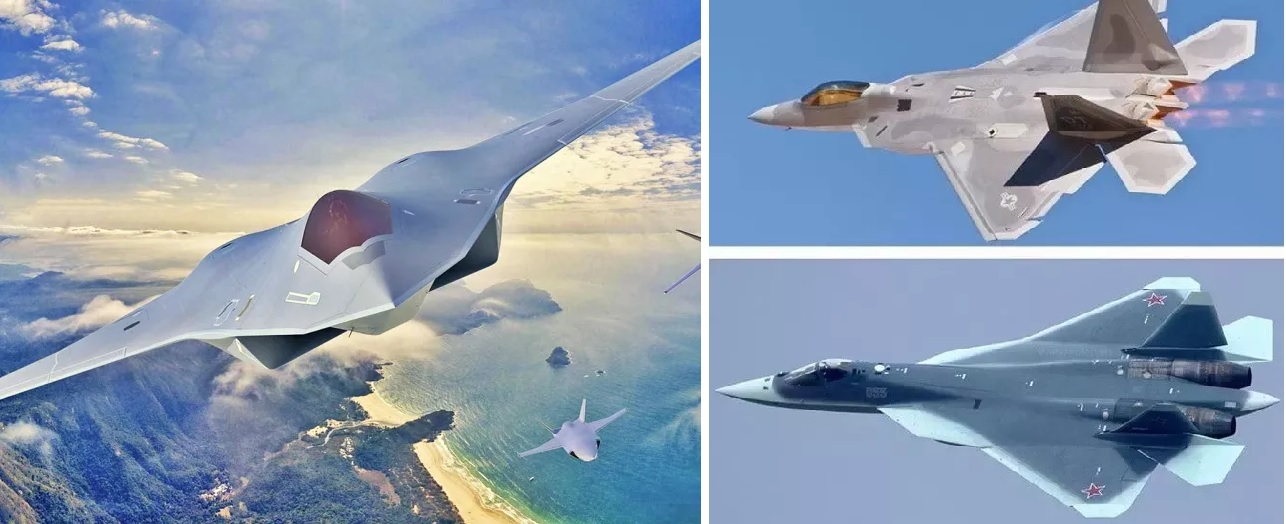 Key Differences Between 5th vs. 6th Generation Fighter Jets
Key Differences Between 5th vs. 6th Generation Fighter Jets
-
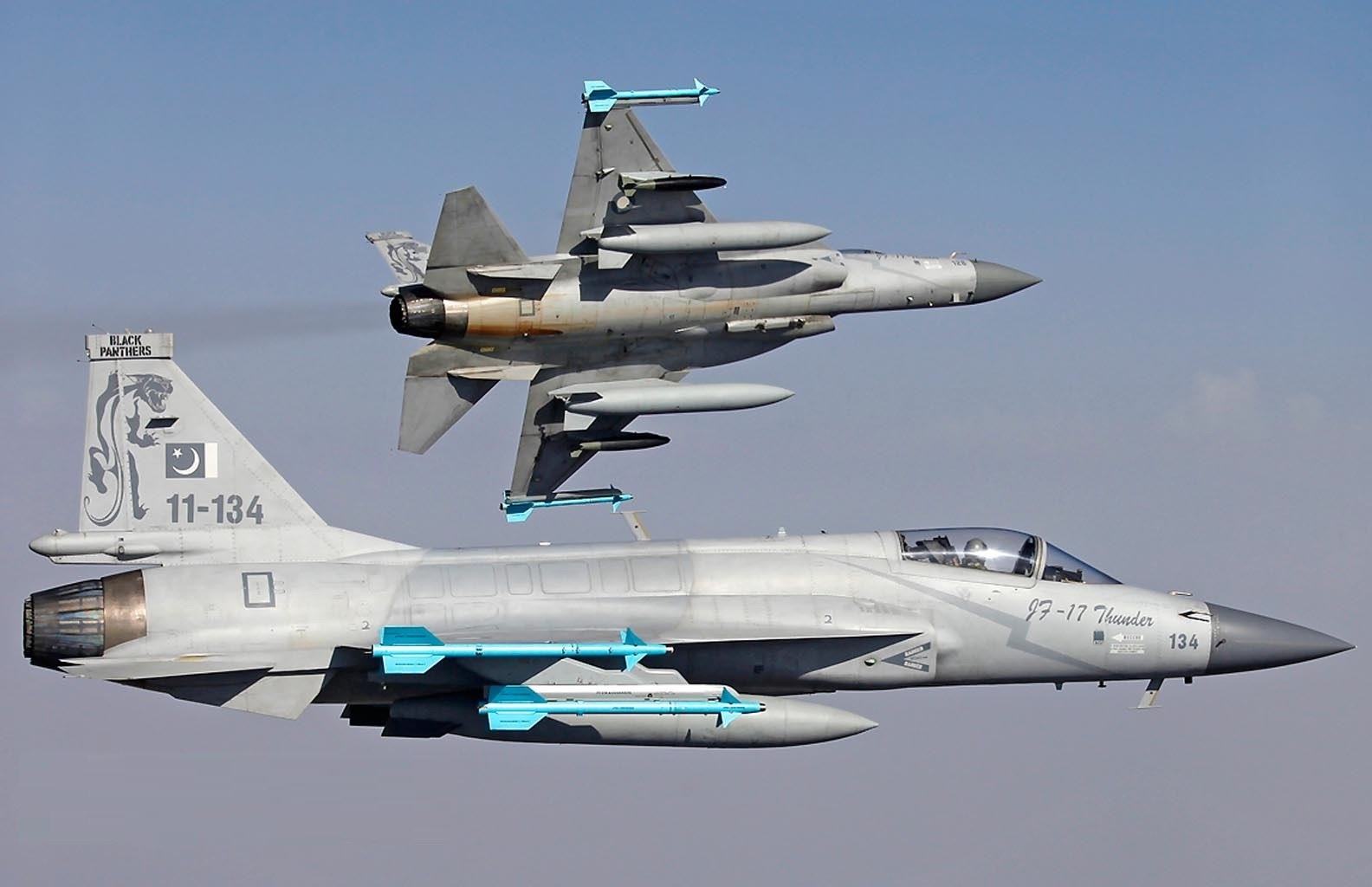 Pakistan Air Force to Unveil Stealth-Enhanced JF-17 Block 4 Fighter Jet by 2028
Pakistan Air Force to Unveil Stealth-Enhanced JF-17 Block 4 Fighter Jet by 2028
-
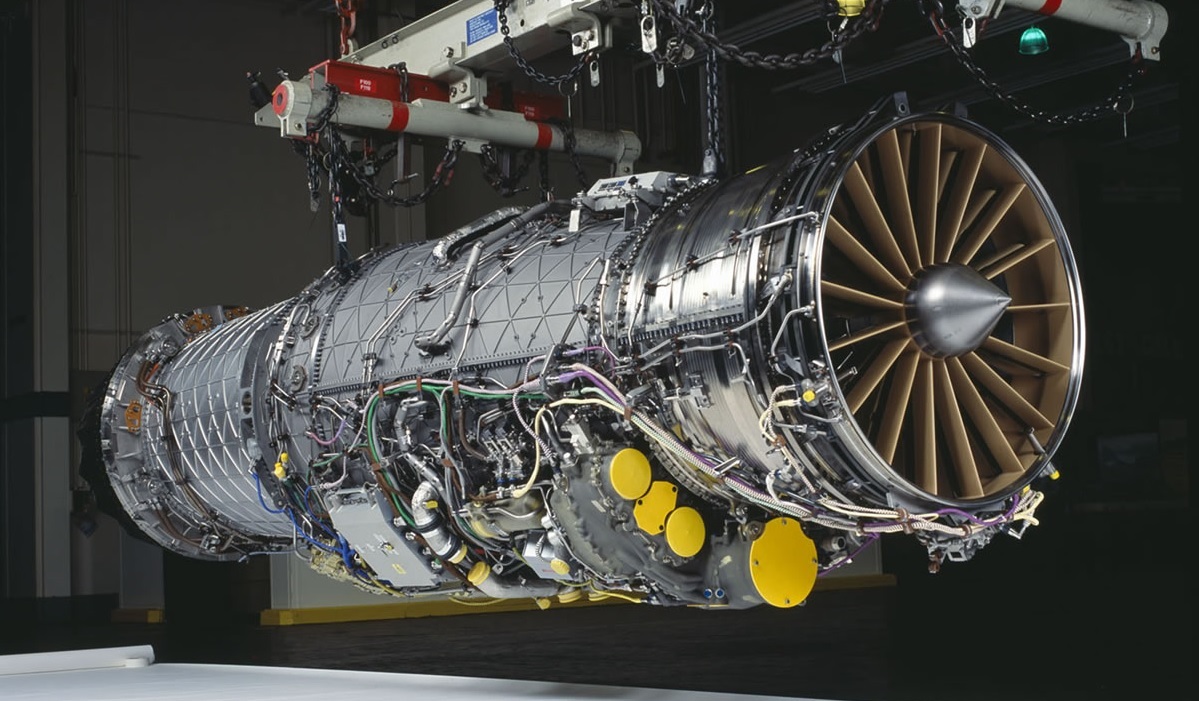 India’s AMCA Engine Decision: Safran vs. Rolls-Royce Final Expected by 2025
India’s AMCA Engine Decision: Safran vs. Rolls-Royce Final Expected by 2025
-
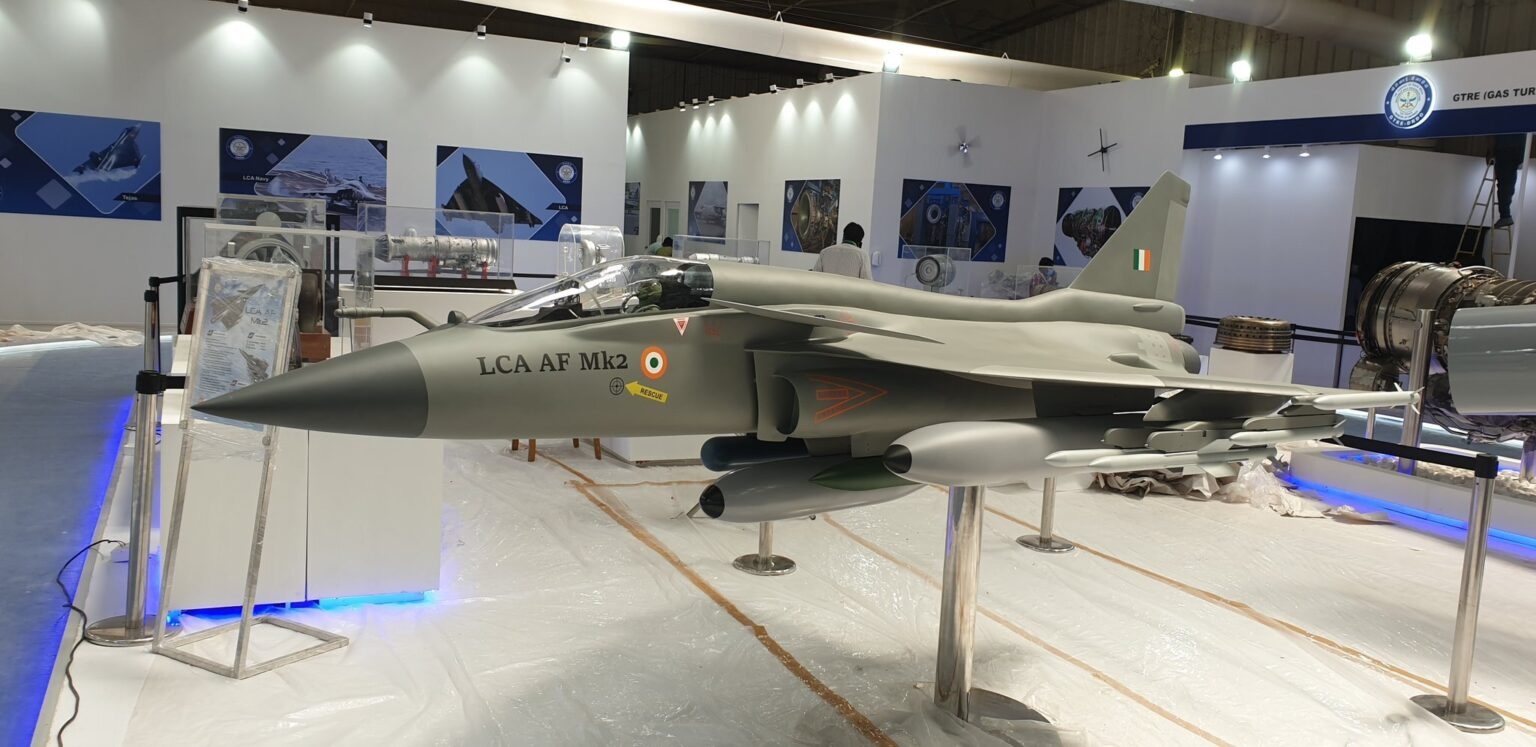 Tejas Mk2 Nears 2025 Rollout as HAL Ramps Up Final Assembly and System Integration
Tejas Mk2 Nears 2025 Rollout as HAL Ramps Up Final Assembly and System Integration
-
 Pakistan Announces 15% Increase in Defence Budget for 2024-25 Amid Economic Crisis
Pakistan Announces 15% Increase in Defence Budget for 2024-25 Amid Economic Crisis
-
 India's TEDBF Program Takes Shape First Flight by 2028: Aiming for Naval Supremacy with Advanced Stealth and Technology
India's TEDBF Program Takes Shape First Flight by 2028: Aiming for Naval Supremacy with Advanced Stealth and Technology
Top Trending in 4 Days
-
 Pakistan Army to Deploy Troops to Gaza by January 2026 Under Trump–Munir Deal, $500 Per Soldier
Pakistan Army to Deploy Troops to Gaza by January 2026 Under Trump–Munir Deal, $500 Per Soldier
-
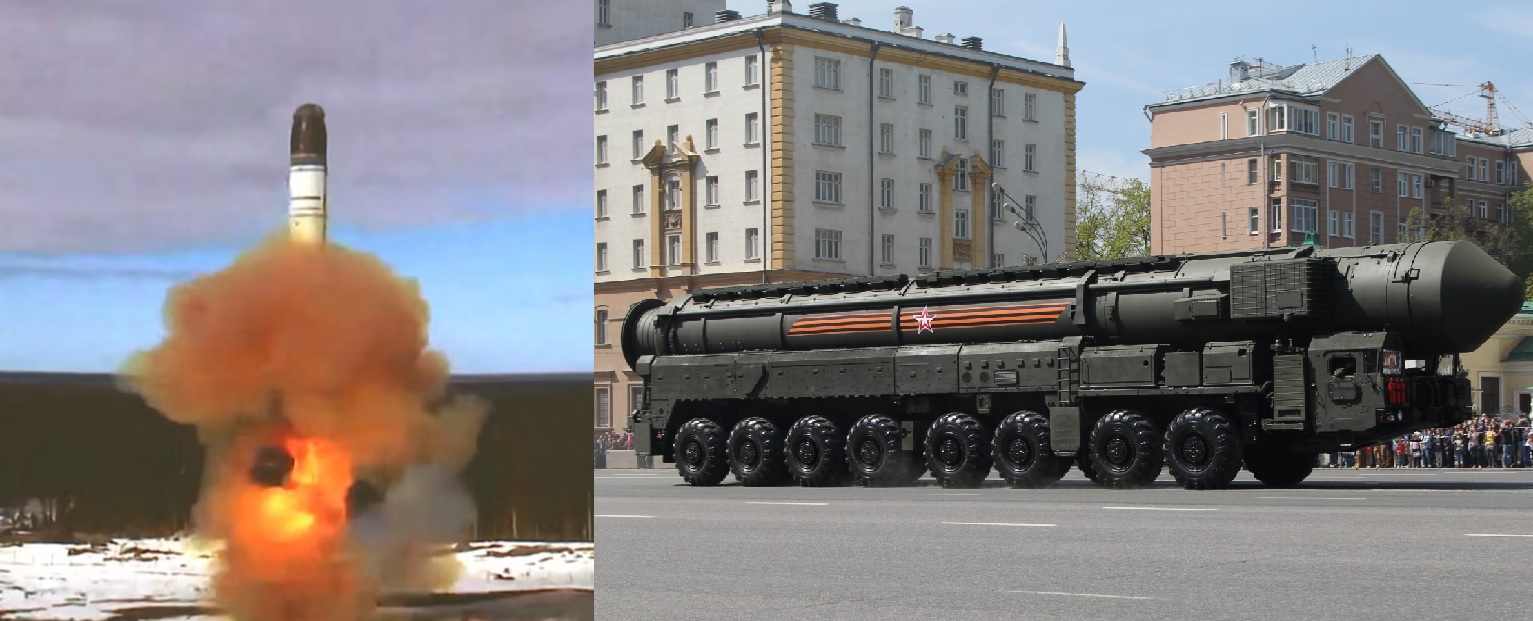 Russia Simulates Full-Scale Nuclear War in Siberia, Deploys Yars ICBMs on Combat Patrols
Russia Simulates Full-Scale Nuclear War in Siberia, Deploys Yars ICBMs on Combat Patrols
-
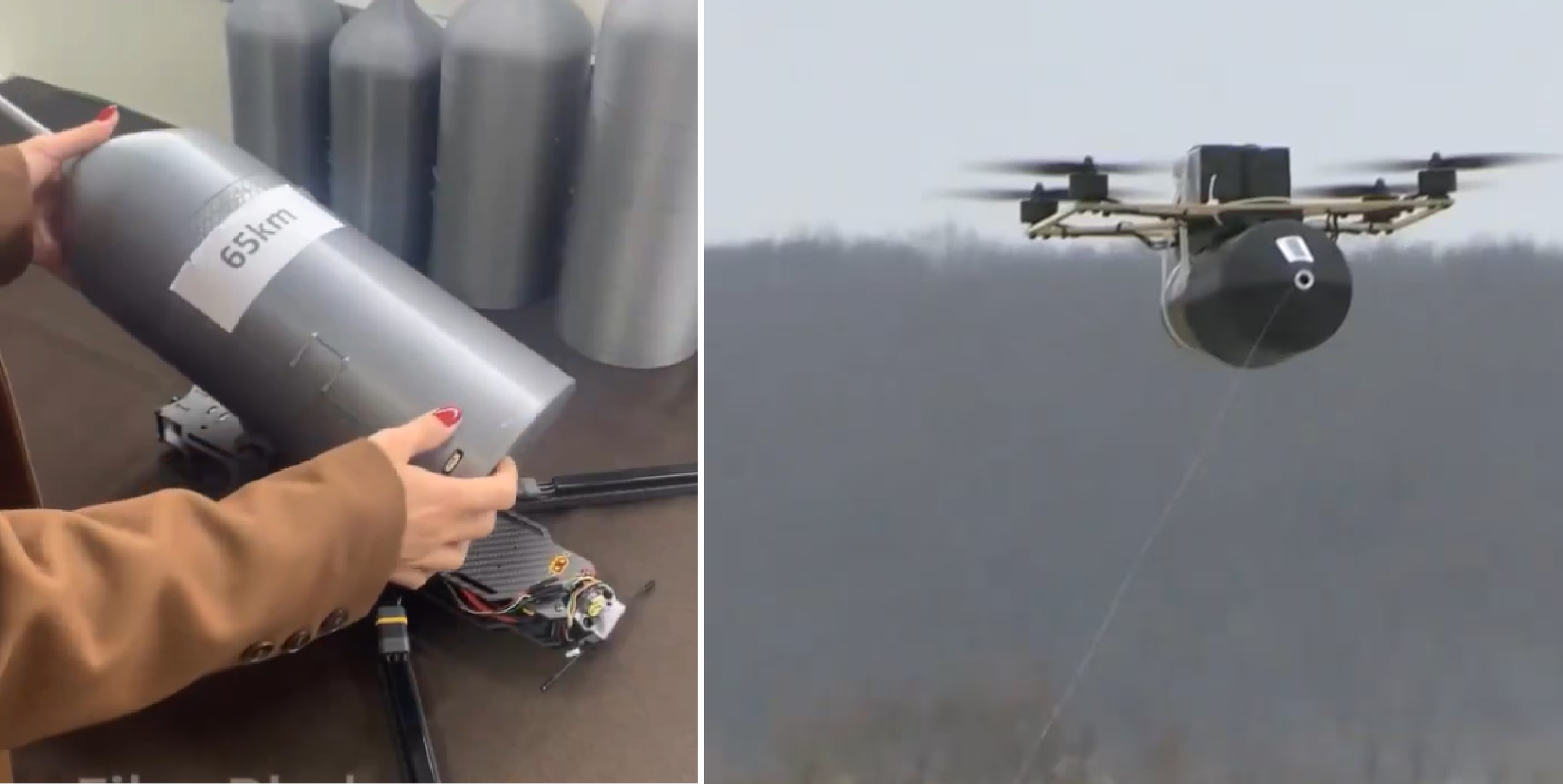 Russia Claims Test of 65-Kilometre Fiber-Optic FPV Drone Link
Russia Claims Test of 65-Kilometre Fiber-Optic FPV Drone Link
-
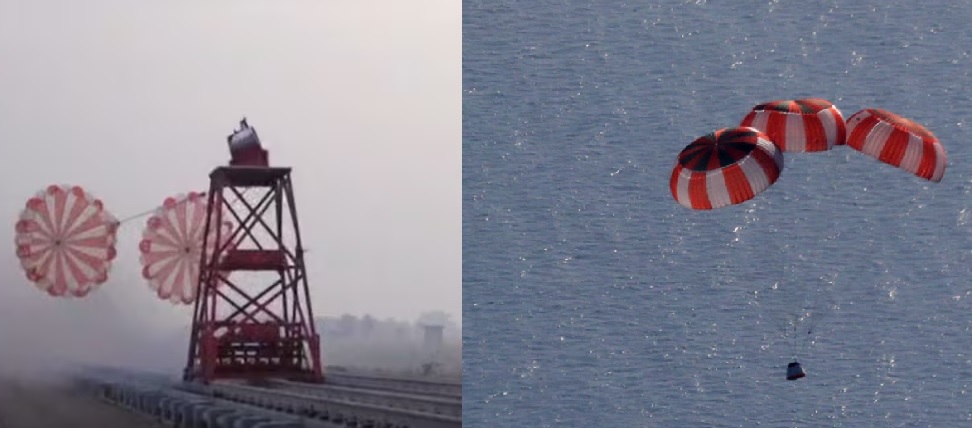 ISRO Successfully Qualifies Drogue Parachutes for Gaganyaan Crew Module
ISRO Successfully Qualifies Drogue Parachutes for Gaganyaan Crew Module
-
 U.S. Seizes China-Linked Oil Tanker Carrying Venezuelan Crude in International Waters
U.S. Seizes China-Linked Oil Tanker Carrying Venezuelan Crude in International Waters
-
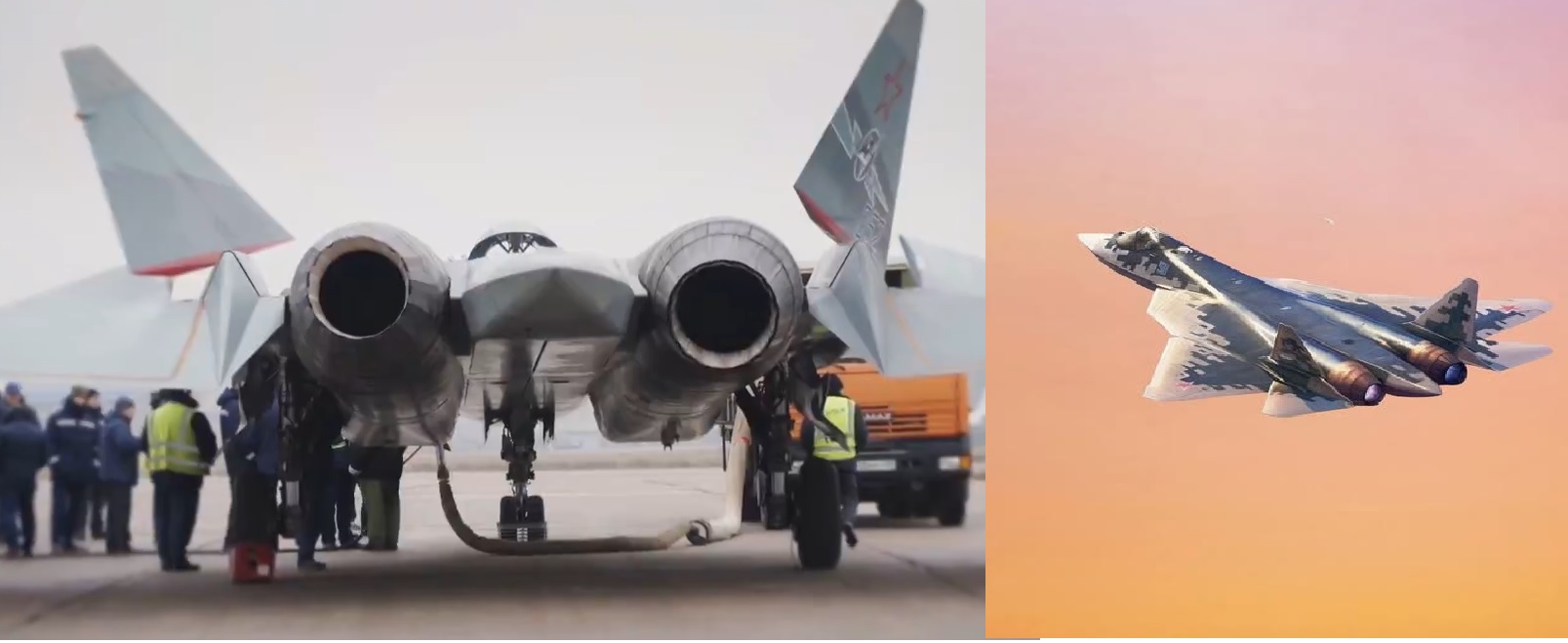 Russian Su-57 Conducts First Flight With Next-Generation Izdeliye-177 Engine
Russian Su-57 Conducts First Flight With Next-Generation Izdeliye-177 Engine
-
 Russian Strike on Mayaki Bridge Threatens Up to 60% of Ukraine’s Fuel Supply
Russian Strike on Mayaki Bridge Threatens Up to 60% of Ukraine’s Fuel Supply
-
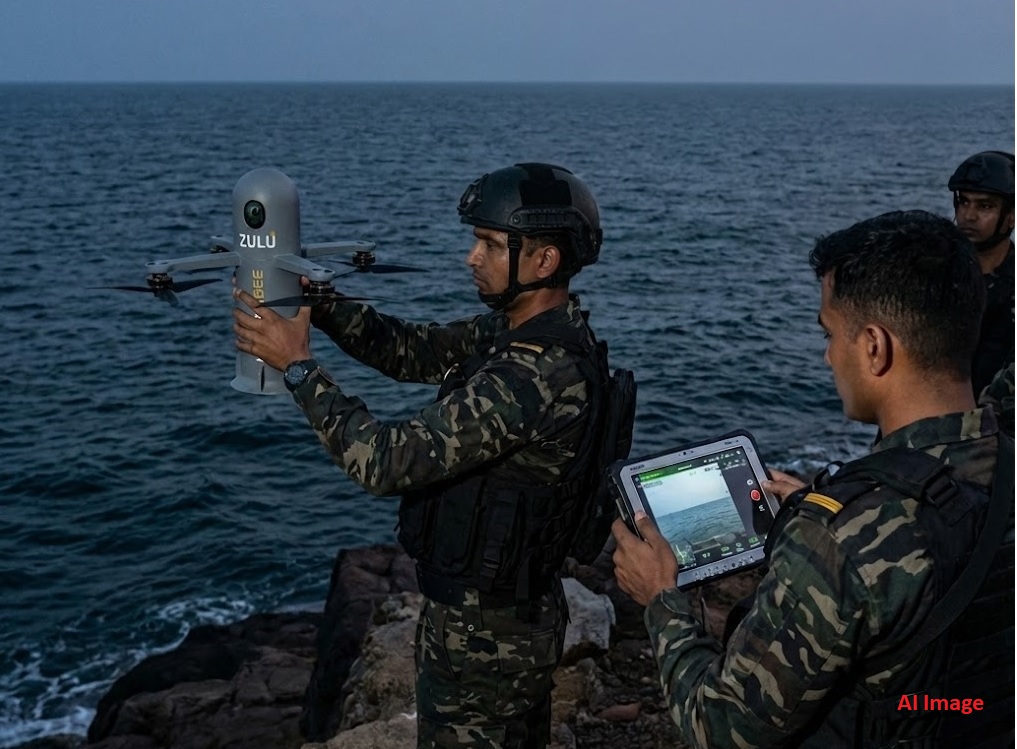 Indian Navy’s MARCOS Induct High-Tech ‘Hoverbee’ Kamikaze Drones for Stealth Operations
Indian Navy’s MARCOS Induct High-Tech ‘Hoverbee’ Kamikaze Drones for Stealth Operations






